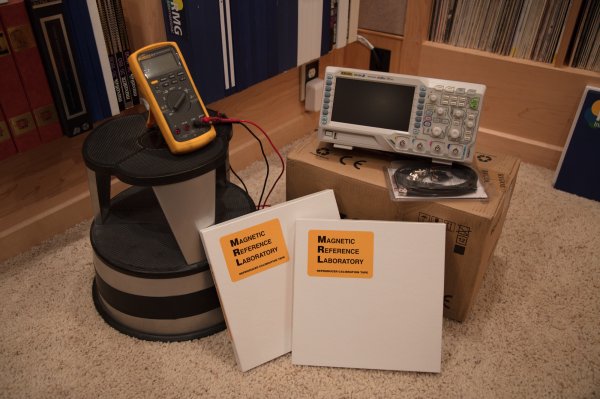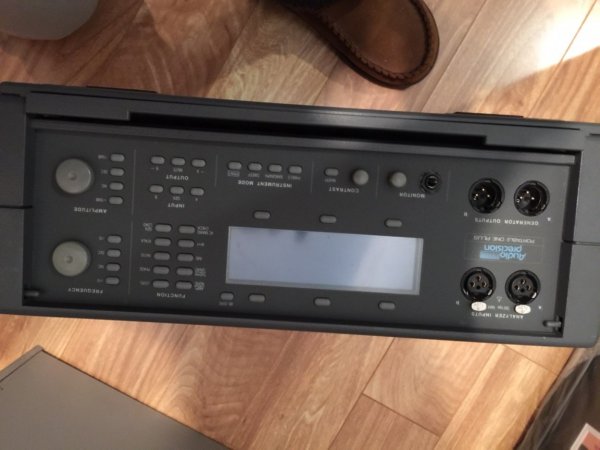Love to know what test tapes and signal generator you use to align your machines. Do you use a phase meter to set azimuth? What speeds do you use to playback and record?
Why are you asking these questions?
Love to know what test tapes and signal generator you use to align your machines. Do you use a phase meter to set azimuth? What speeds do you use to playback and record?
Love to know what test tapes and signal generator you use to align your machines. Do you use a phase meter to set azimuth? What speeds do you use to playback and record?


Mike always said he wasnt a measurement guy .
Mike always said he wasnt a measurement guy .
Looks quite professional to me
Looks great Mike.
The poster is a troll and Fred's constant berating of others is a joke. He loves to rip into audiophiles. Meanwhile his reproduce setup costs $81,000. Who does he think is going to buy that? Technicians?
over the years I've acquired some good tools so when 'smart' people come around to assist me with things, I have the tools on hand for them to do the work. and have had my hand held to do a few fixes myself too.
i'm certainly not a measurement guy. but dubbing tapes optimally is a new process for me, and with these outstanding RTR decks and since I have some knowledgeable local friends and either own personally or have access to proper tools why not learn? with rare exception, up till now I was just playing them back to listen. not producing something.
I suppose the question is what is the delta of fine tuning the process verses not. all of the source tapes I have are modern formulations, almost 100% IEC and Tape Project 'clones' (similar set-up to that). but unless I go through this learning/mentoring process I won't know what i'm missing. oh and BTW, my dubbing A-820 does not have a direct out head switch, and my intentions are that it stays 'stock'. and both 1/4" and 1/2" head-modules are separately tuned so they can be switched and work properly.
not sure how deep I will get into it. hey; i'll give Fred some of the credit for his push, but when I committed the resources to acquiring the third A-820 I knew I needed to raise my game to have it make sense.
thanks David. and I agree with your assessment of the poster's intentions.
11 years ago when I was the first audiophile to encounter Fred (an 8 month frustrating/rewarding experience), he was positioned to reap the potentially significant benefits from the coming audiophile tape explosion. alas......it never happened for him as it could have for whatever reason. now it's my fault. as if I owed him to be a conduit for his efforts. I hope he works it out, as he has much to offer.
Mike well i have the impression that if you do something regarding audio you do it throughly.
Which is the way to go off course , Also anybody who drives 500 miles to get a pair of VAC s earns my respect , lol
He measures with his ears!
Will post later some thoughts on dubbing - start with a teaser - when you dub a tape, you have two maybe identical decks sitting next to each other. One plays the tape - "de equalizes" it flat, then the record deck "re-equalizes" it. I'll make the statement that you are "accumulating" time and frequency errors not to mention distortion - and because you are probably not playing back the tape on the same type deck it was recorded on, there are additional "errors" accumulating because of that. Assuming you are happy with the EQ already on the tape you want to dub, why not just "dub it flat"?. It takes a few tricks but I've played with it, can do it with one K/C pre (with a little more gain so it can also act as a record amp) , and the results are quite satisfying. More later if interested...
Charles
I "set up" my pre's with the special MRL repro tape that synch's with my ST 1500 to produce a 20 to 20K (plus) frequency sweep and adjust everything to get the flattest response.
Can you post a photo of a playback FR using your ST1500 and the MRL sweep tape? Don't have any pics right now - will try to take a few next time I set up a deck.
When setting the play low-frequency EQ, do you compensate for fringing-effect of the MRL tape? I adjust the LF to be a compromise between minimizing the amplitude of the bumps versus a general rolloff of their "envelope"
I think the most important thing to consider when making a dub is the proper recording level. You don't want to make the new recording at the same (or lower) flux level as the playback tape. Recording at the same flux level will mean the copy will have an increased noise floor compared to the original tape. I think that it's best to record at a slightly higher flux level than the original tape. That way you are capturing the entire dynamic range of the original tape. In other words, you want the noise floor of the original tape to be slightly higher than the noise floor of the recording deck. The only exception to this is that you don't want to overload the recording tape when you record at a slightly higher level (as in, you don't want to exceed zero VU). This usually will not happen if your deck is calibrated for the best recording tapes available (SM900 and ATR). Good Points
When members here are making dubs, are you recording at the same, lower or higher flux level as the original tape? Or do you just record up to 0VU on all dubs?
| Steve Williams Site Founder | Site Owner | Administrator | Ron Resnick Site Owner | Administrator | Julian (The Fixer) Website Build | Marketing Managersing |

